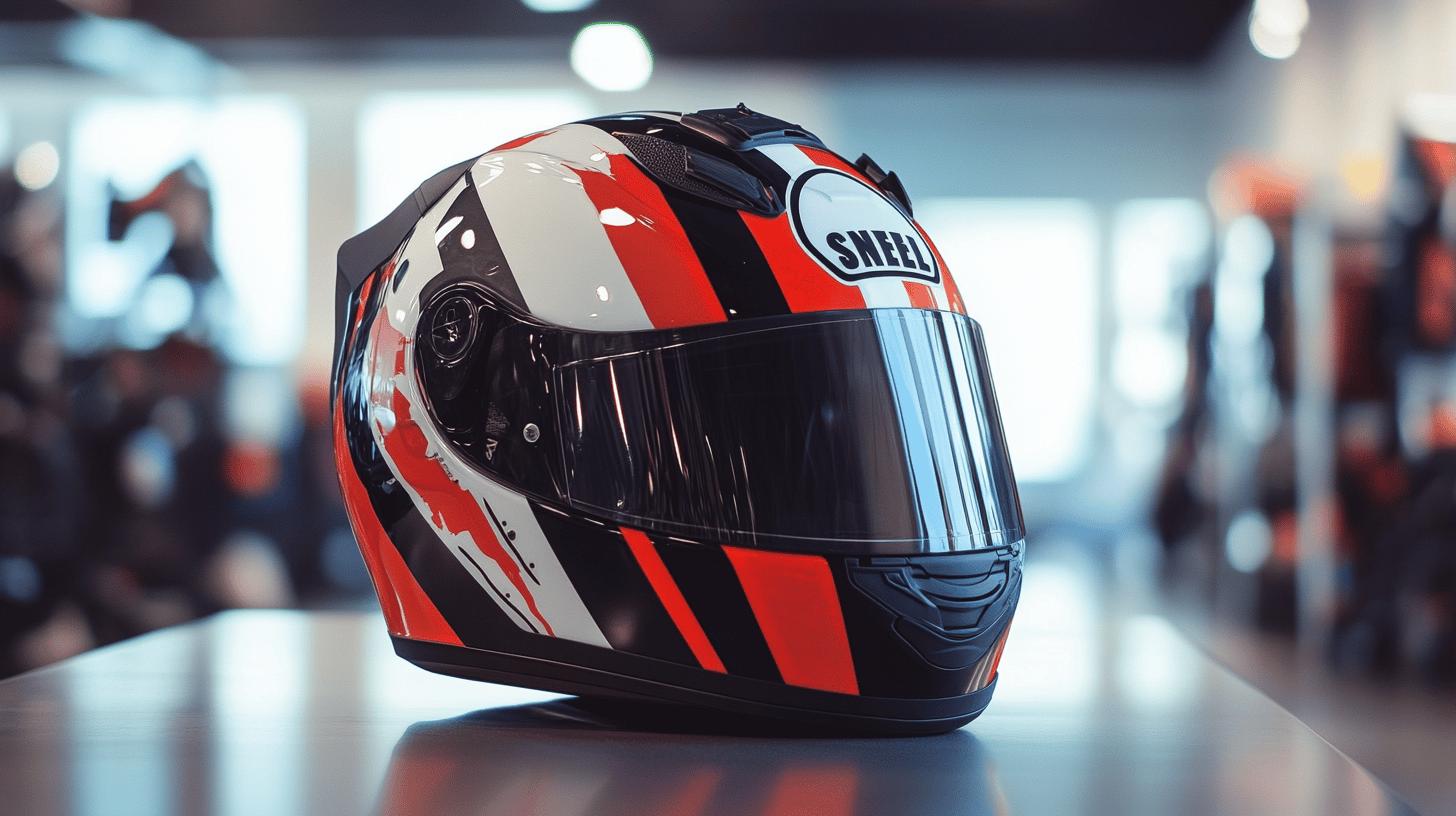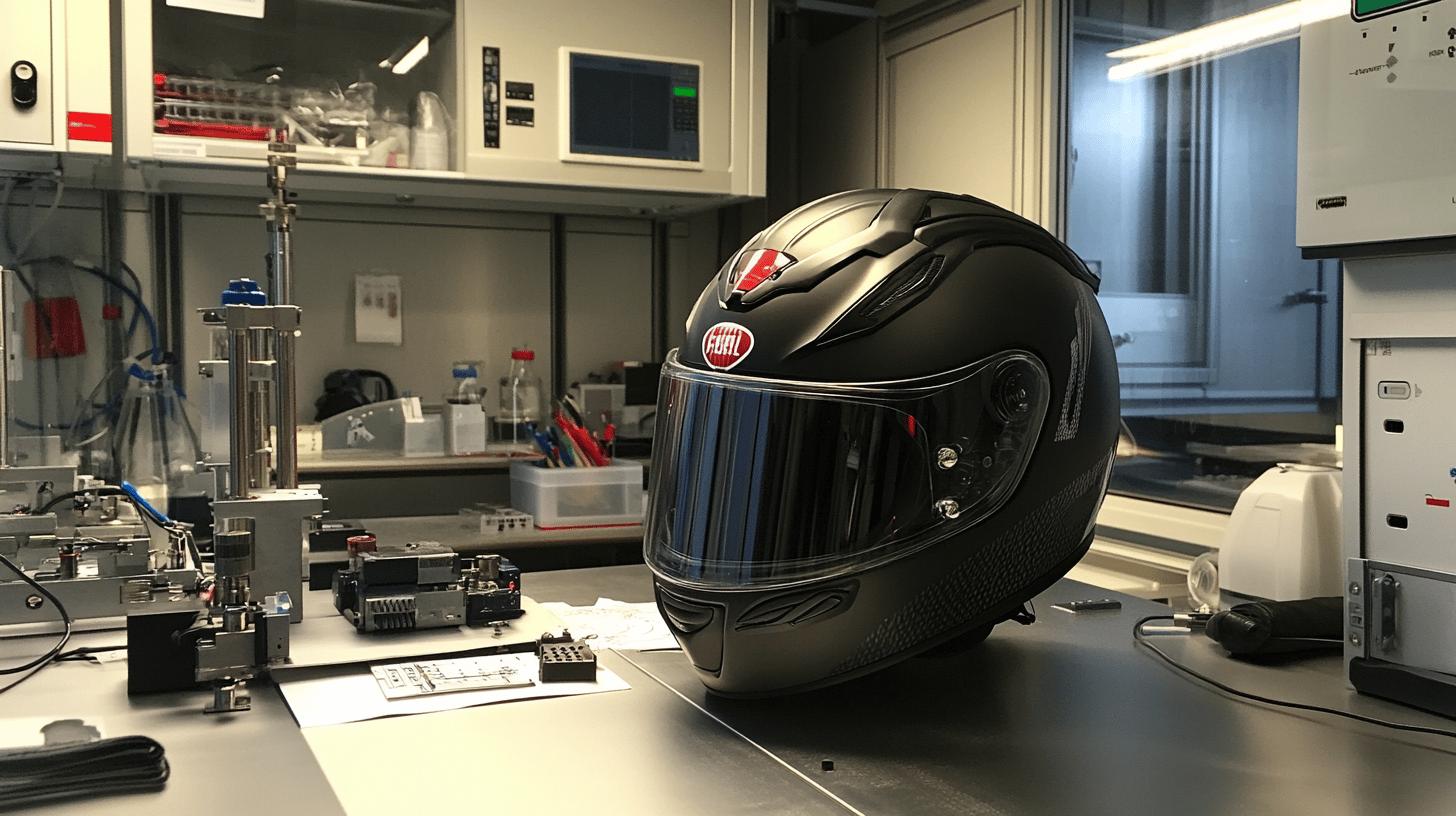When it comes to motorcycle safety, not all helmets are created equal. Riders might assume that any helmet will do, yet helmet certifications reveal a complex landscape of safety standards designed to protect in various scenarios.
Certifications like DOT, SNELL, ECE, and FIM represent different levels of protection, each suited for specific riding contexts. Understanding these certifications ensures you choose a helmet that not only fits comfortably but provides the rigorous protection needed for your riding style.
So, what certifications should your helmet have? Let’s explore the essential standards that guarantee your safety on the road.
Understanding Key Motorcycle Helmet Certifications

What certifications should a motorcycle helmet have? The most recognized certifications include DOT, SNELL, ECE, and FIM. These certifications play a critical role in ensuring that helmets provide adequate protection during accidents.
They establish standardized testing procedures that evaluate essential safety features, ensuring the helmet can withstand various impact scenarios. For riders, understanding these certifications is paramount as they dictate the level of safety a helmet can offer.
DOT, SNELL, ECE, and FIM are the primary motorcycle helmet certifications. DOT (Department of Transportation) is the minimum legal safety standard in the United States, focusing on basic impact and penetration resistance. SNELL, awarded by the Snell Memorial Foundation, is known for its rigorous testing, including high-energy impact assessments.
The ECE (Economic Commission for Europe) certification is a global standard, recognized for its comprehensive testing, especially accounting for real-life environmental factors. The FIM (Fédération Internationale de Motocyclisme) is specifically tailored for professional racing helmets, ensuring top-tier safety in competitive scenarios.
The testing procedures and safety standards vary significantly among these certifications. DOT employs a self-certification process by manufacturers, ensuring helmets meet minimum safety criteria. SNELL involves third-party testing with stringent assessments like guided fall and oblique impact tests.
ECE encompasses a wide range of tests, including rotational impact, updated in the ECE 22.06 standard. FIM focuses on helmets used in world championship racing, ensuring they meet the highest safety requirements through advanced testing protocols.
-
DOT Certification: Impact resistance, penetration testing, retention system, peripheral vision
-
SNELL Certification: High-energy impact, guided fall, dynamic retention, chin bar impact
-
ECE Certification: Real-life environmental factors, rotational impact, helmet usability
- FIM Certification: Professional racing standards, high-speed impact, aerodynamic performance
DOT Certification: What You Need to Know

DOT certification, formally known as FMVSS 218, is the foundational legal standard for motorcycle helmets in the U.S. It establishes critical safety benchmarks that manufacturers must meet.
The certification process involves self-certification by the manufacturers, who must ensure that their helmets pass specified tests focusing on impact attenuation, penetration resistance, retention system, and peripheral vision.
These tests simulate real-world conditions, assessing how well a helmet can absorb energy upon impact, resist penetration by sharp objects, maintain chin strap integrity, and provide sufficient side vision for riders.
The significance of DOT certification lies in its role as the minimum legal requirement for helmet safety in the United States.
Complying with DOT standards is essential for legal compliance and provides a basic level of safety assurance to riders. Helmets meeting DOT criteria are deemed suitable for street use, offering protection in typical crash scenarios.
This certification ensures that even entry-level helmets meet fundamental safety requirements, promoting widespread accessibility to safe riding gear.
| DOT Certification | Focus Area |
|---|---|
| Impact Attenuation | Assess helmet’s ability to absorb impact energy |
| Penetration Resistance | Tests resistance to sharp object penetration |
| Retention System | Evaluates chin strap strength and stability |
| Peripheral Vision | Ensures adequate side vision for safety |
Exploring ECE Certification for Helmets

What is ECE certification? ECE certification, established in 1972, is a critical European standard ensuring helmet safety through comprehensive testing procedures. Recognized globally, it evaluates helmets for real-life environmental factors, offering assurance to riders across various conditions.
As a widely accepted standard, ECE certification helps provide a consistent level of safety, making it an essential benchmark for both European and international markets.
What are the updates in ECE 22.06? The recent update to ECE 22.06 introduces several significant changes to improve helmet safety. This update includes new testing protocols such as rotational impact tests, which are designed to better simulate the complexities of real-world crashes.
These enhancements aim to address the dynamic forces experienced during an accident, offering a more thorough assessment of helmet performance. The ECE 22.06 standard thus represents a progressive step towards more robust helmet safety criteria.
How does ECE certification address real-life environmental factors? ECE certification incorporates tests that simulate diverse environmental conditions to ensure helmets perform effectively in various scenarios.
This includes assessments under different temperatures and weather conditions, reflecting the challenges riders face on the road. By accounting for these factors, ECE-certified helmets offer a reliable level of protection that adapts to the rider's environment, enhancing overall safety during a ride.
-
Rotational impact tests assess helmet performance during angled impacts
-
New design features improve safety and usability
-
Enhanced testing under different environmental conditions
- Updated criteria for helmet retention systems
SNELL Certification: Rigorous Safety Testing

What is SNELL certification? SNELL certification, established by the Snell Memorial Foundation, is recognized for its rigorous testing standards, setting a benchmark for helmet safety. This certification is often regarded as more stringent than DOT or ECE, ensuring that helmets not only meet basic safety criteria but also excel under more challenging conditions.
SNELL certification involves a comprehensive suite of tests designed to assess a helmet's ability to protect the rider in various scenarios. Key tests include the guided fall test, which evaluates how well a helmet can manage impact energy when dropped from a specific height.
The oblique impact test assesses the helmet's performance against angular forces, while the roll-off test ensures the helmet remains securely in place during an accident. Dynamic retention tests evaluate the chin strap's strength under tension, and chin bar impact tests measure the resilience of the chin area.
The SNELL M2025 standard, introduced in November 2023, is the latest update set to take effect in October 2024, replacing the M2020 standard. This update incorporates advancements in testing methodologies and materials, aiming to further enhance helmet safety.
The M2025 standard reflects ongoing research and technological advancements, providing riders with helmets that offer improved protection based on the latest insights into crash dynamics.
Compared to other certifications, SNELL is noted for its rigorous approach. While DOT and ECE provide essential baseline safety, SNELL certification involves third-party testing with more demanding criteria.
This makes SNELL-certified helmets a preferred choice for those seeking superior protection, especially in high-risk environments or competitive racing.
SNELL Certification Tests
-
Guided Fall Test: Assesses impact energy management when helmets are dropped from a height.
-
Oblique Impact Test: Evaluates performance against angular forces experienced in crashes.
-
Roll-Off Test: Ensures the helmet remains secure on the rider's head during accidents.
-
Dynamic Retention Test: Tests the chin strap's strength and stability under tension.
-
Chin Bar Impact Test: Measures the resilience and protection offered by the chin area.
Choosing the Right Certified Helmet for Your Needs

Selecting a helmet that aligns with your riding style is paramount for safety. What certifications should a motorcycle helmet have? The answer depends heavily on your riding environment. For street riding, DOT or ECE certifications offer adequate protection and legal compliance, ensuring the helmet passes essential safety tests.
On the other hand, SNELL or FIM certifications are more suited for racing, where higher speeds necessitate stringent safety standards. These certifications ensure that helmets are tested for high-energy impacts and offer superior protection.
Helmet fit and comfort are critical factors that directly affect safety. A properly fitting helmet, with a secure chin strap, prevents the helmet from dislodging during an accident, significantly reducing injury risk. The helmet should fit snugly around the head, offering comfort without excessive pressure.
Checking the fit involves ensuring the helmet does not move independently when the rider shakes their head. Comfort features, like padding and ventilation, further enhance the riding experience, making it essential to try on multiple models before purchasing.
When evaluating certified helmet brands and models, consider both safety certifications and additional features. Reputable brands often provide detailed information about their testing procedures and the standards they meet.
It's advisable to read reviews and perhaps seek recommendations from experienced riders. While certifications ensure a basic level of safety, brand reputation and additional features like modular designs or integrated communication systems can add value to your helmet choice.
-
Choose a helmet with the appropriate certification for your riding style.
-
Ensure the helmet fits snugly without causing discomfort.
-
Verify that the chin strap is secure and adjustable.
-
Consider additional features like ventilation and padding.
-
Research certified helmet brands for quality assurance.
-
Test multiple models to find the best fit and comfort.
Final Words
Choosing the right motorcycle helmet requires understanding various certifications like DOT, ECE, SNELL, and FIM—each with unique safety standards.
These certifications ensure helmets provide adequate protection for different riding scenarios. Prioritizing fit and comfort, especially the chin strap, is crucial.
With keystone knowledge of what certifications a motorcycle helmet should have, motorcyclists can confidently select the best gear to enhance safety and enjoy better riding experiences.
FAQ
What certifications should I look for in a motorcycle helmet?
A motorcycle helmet should ideally have certifications like DOT (FMVSS 218) for basic U.S. standards, ECE for European standards, SNELL for rigorous safety, and FIM for racing scenarios.
Is MIPS better than Snell?
MIPS and Snell serve different purposes; MIPS focuses on reducing rotational impact forces, while Snell provides comprehensive safety tests. Both enhance helmet protection in distinct ways.
Is ECE 22.06 better than DOT?
ECE 22.06 includes real-world environmental testing and recent updates for improved safety, offering more comprehensive protection than DOT's basic standard.
What certification is needed for a bike helmet?
For bike helmets, look for certifications like CPSC in the U.S., EN 1078 in Europe, or AS/NZS 2063 for added safety assurance during cycling.
Why is DOT certification important for helmets?
DOT certification, per FMVSS 218, is mandatory for helmets in the U.S., focusing on impact, penetration, retention systems, and peripheral vision, ensuring basic safety and legal compliance.
What features does ECE 22.06 include?
ECE 22.06 incorporates tests for rotational impacts and enhanced design features, reflecting its advanced approach to helmet safety in Europe and globally.
How does SNELL certification differ from other standards?
SNELL certification involves more stringent testing procedures, such as guided fall and roll-off tests, offering a higher safety margin than DOT or ECE standards.
How do I choose the right certified helmet for my needs?
Consider your riding style; racing might require FIM certification, while street use fits DOT or ECE. Ensure proper fit and comfort, particularly with the chin strap, for effective protection.

Mark Anderson is a trusted expert with over 25 years of riding experience. At 56, his deep knowledge of long-distance touring and participation in major motorcycle rallies makes him a reliable source for gear recommendations on ProtectiveGearz. Mark’s decades of firsthand experience ensure his advice is authoritative and valuable to riders seeking expert guidance.



